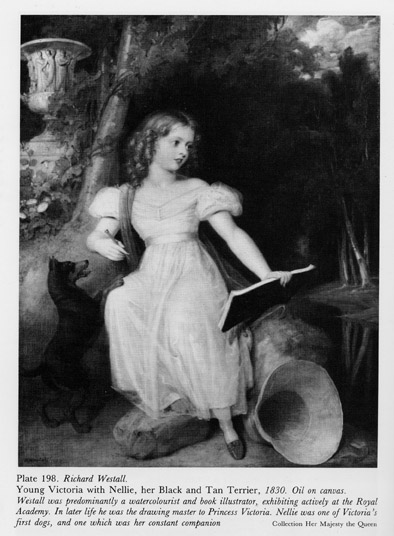
QUEEN VICTORIA AND SIR EDWIN LANDSEER
from Dog Painting, 1840-1940, A Social History of the Dog in Art
by William Secord
|
Queen Victoria's love of dogs is legendary, as was her regard for all dumb creatures,
and her retinue of artists was most impressive indeed. Sir Edwin Landseer, Gourlay
Steell, Charles Burton Barber and Maud Earl are but a few of the artists who painted
portraits of her faithful pets. We shall look at these paintings, symbols of canine
affection, and how they were a comfort to her in everyday life. |
| Next | Last |
Home | About
the WS Gallery | Current
Exhibition | New
Additions | Search Our Inventory
| Commissioning Paintings | 19th
& 20th Century Oils | Contemporary
Artists | Works
on Paper & Collectibles | Books
| Christine Merrill
| Guest book | Email
Us
All images, designs and information on this site
are fully copyrighted © 1999
and may not be reproduced of used in any form or any manner, or displayed in
any way
on any website without the express written consent of The William Secord Gallery,
Inc.
William Secord Gallery, Inc.
29 West 15th Street 4th floor
New York, NY 10011
Between Fifth and Six Avenues
www.dogpainting.com
wsecord@dogpainting.com
Tel. 212-249-0075
212-249-0896
By appointment
